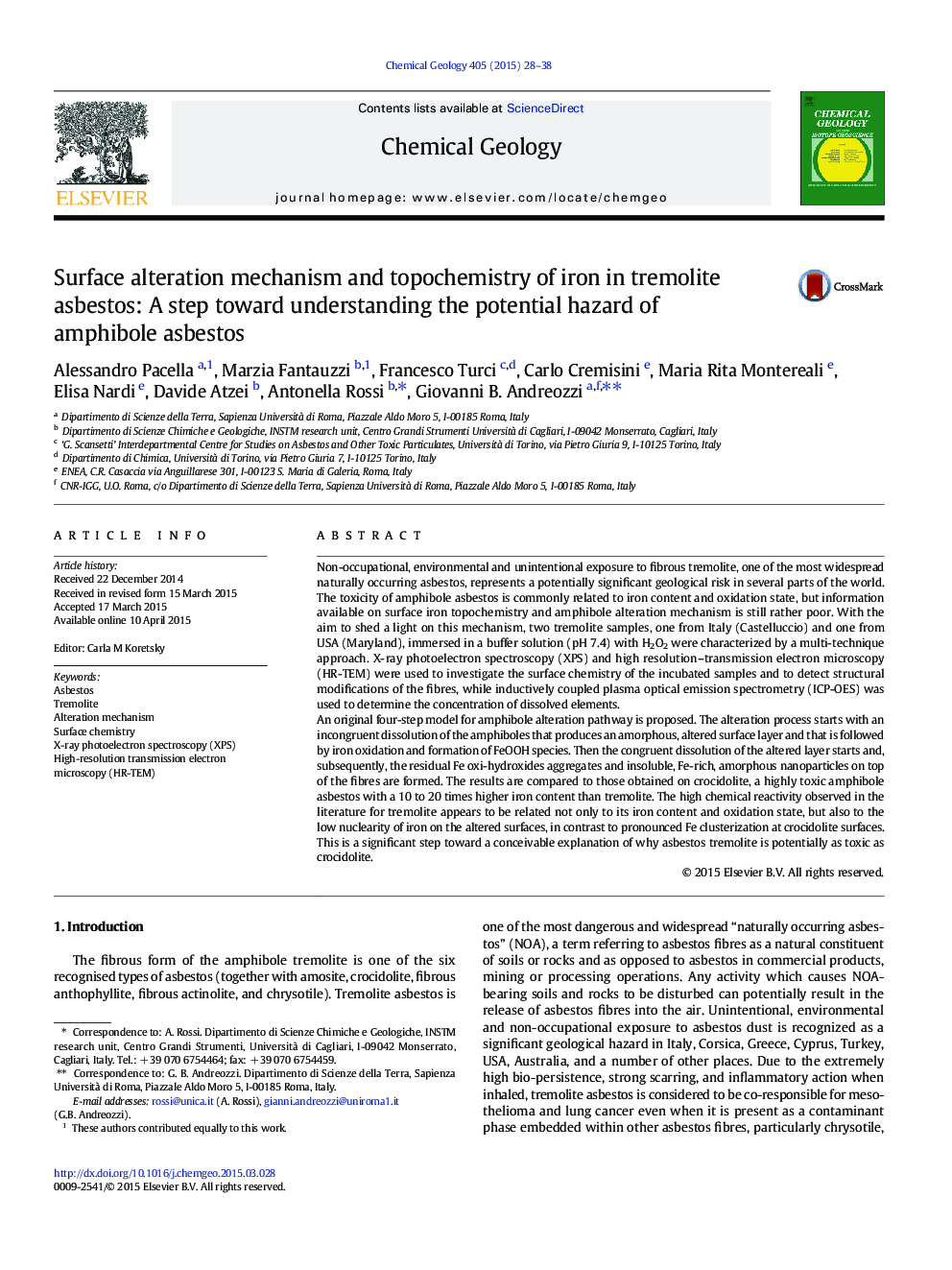| کد مقاله | کد نشریه | سال انتشار | مقاله انگلیسی | نسخه تمام متن |
|---|---|---|---|---|
| 4698534 | 1637568 | 2015 | 11 صفحه PDF | دانلود رایگان |
• New surface reactivity results on tremolite asbestos by XPS, HR-TEM and ICP-AES
• Surface morphology and composition change upon time after incubation at pH 7.4.
• Presence of nano-clustered iron explains the high reactivity of these asbestos.
• Low amounts of iron act as catalyzer of the ROS production.
Non-occupational, environmental and unintentional exposure to fibrous tremolite, one of the most widespread naturally occurring asbestos, represents a potentially significant geological risk in several parts of the world. The toxicity of amphibole asbestos is commonly related to iron content and oxidation state, but information available on surface iron topochemistry and amphibole alteration mechanism is still rather poor. With the aim to shed a light on this mechanism, two tremolite samples, one from Italy (Castelluccio) and one from USA (Maryland), immersed in a buffer solution (pH 7.4) with H2O2 were characterized by a multi-technique approach. X-ray photoelectron spectroscopy (XPS) and high resolution–transmission electron microscopy (HR-TEM) were used to investigate the surface chemistry of the incubated samples and to detect structural modifications of the fibres, while inductively coupled plasma optical emission spectrometry (ICP-OES) was used to determine the concentration of dissolved elements.An original four-step model for amphibole alteration pathway is proposed. The alteration process starts with an incongruent dissolution of the amphiboles that produces an amorphous, altered surface layer and that is followed by iron oxidation and formation of FeOOH species. Then the congruent dissolution of the altered layer starts and, subsequently, the residual Fe oxi-hydroxides aggregates and insoluble, Fe-rich, amorphous nanoparticles on top of the fibres are formed. The results are compared to those obtained on crocidolite, a highly toxic amphibole asbestos with a 10 to 20 times higher iron content than tremolite. The high chemical reactivity observed in the literature for tremolite appears to be related not only to its iron content and oxidation state, but also to the low nuclearity of iron on the altered surfaces, in contrast to pronounced Fe clusterization at crocidolite surfaces. This is a significant step toward a conceivable explanation of why asbestos tremolite is potentially as toxic as crocidolite.
Figure optionsDownload as PowerPoint slide
Journal: Chemical Geology - Volume 405, 5 June 2015, Pages 28–38
